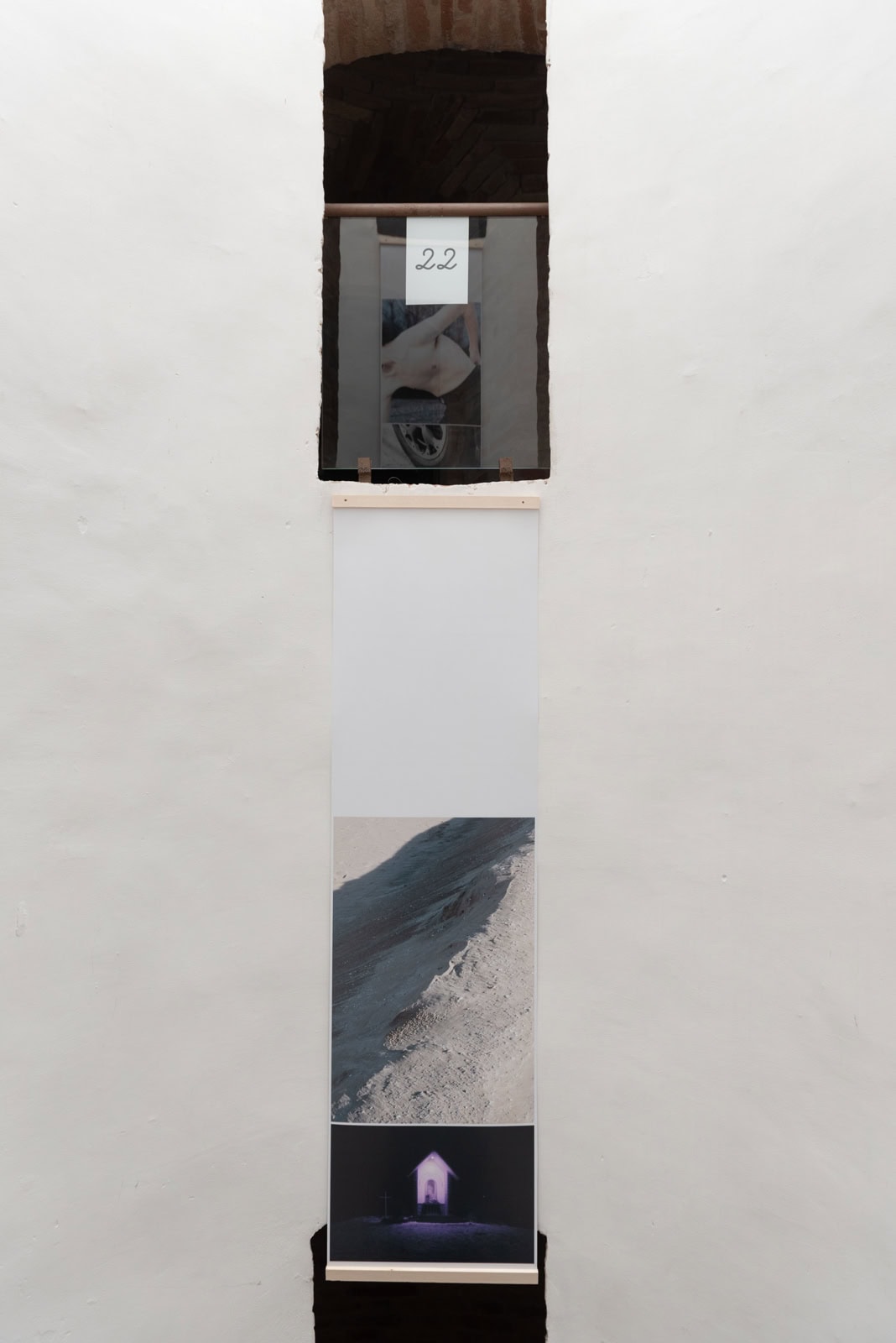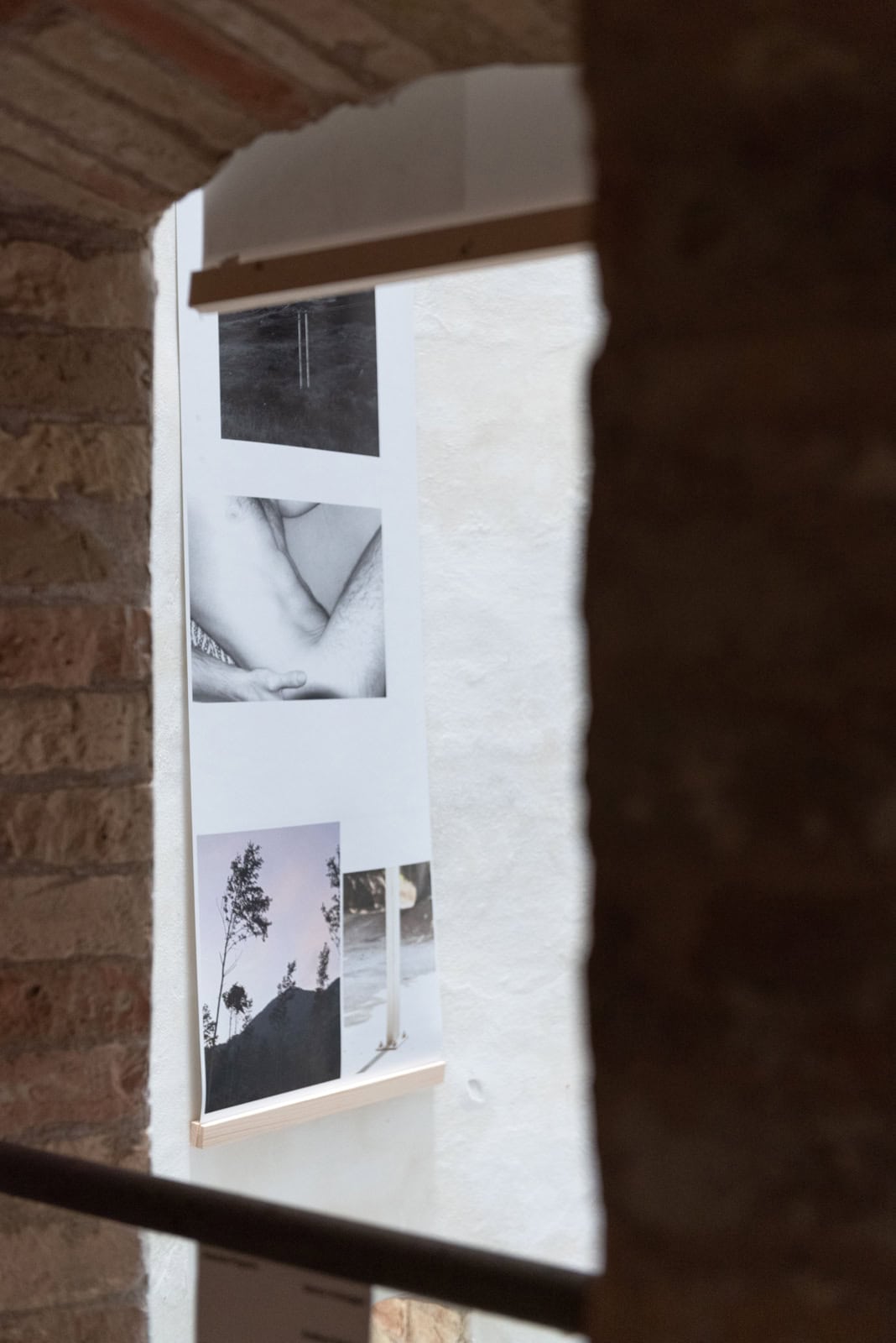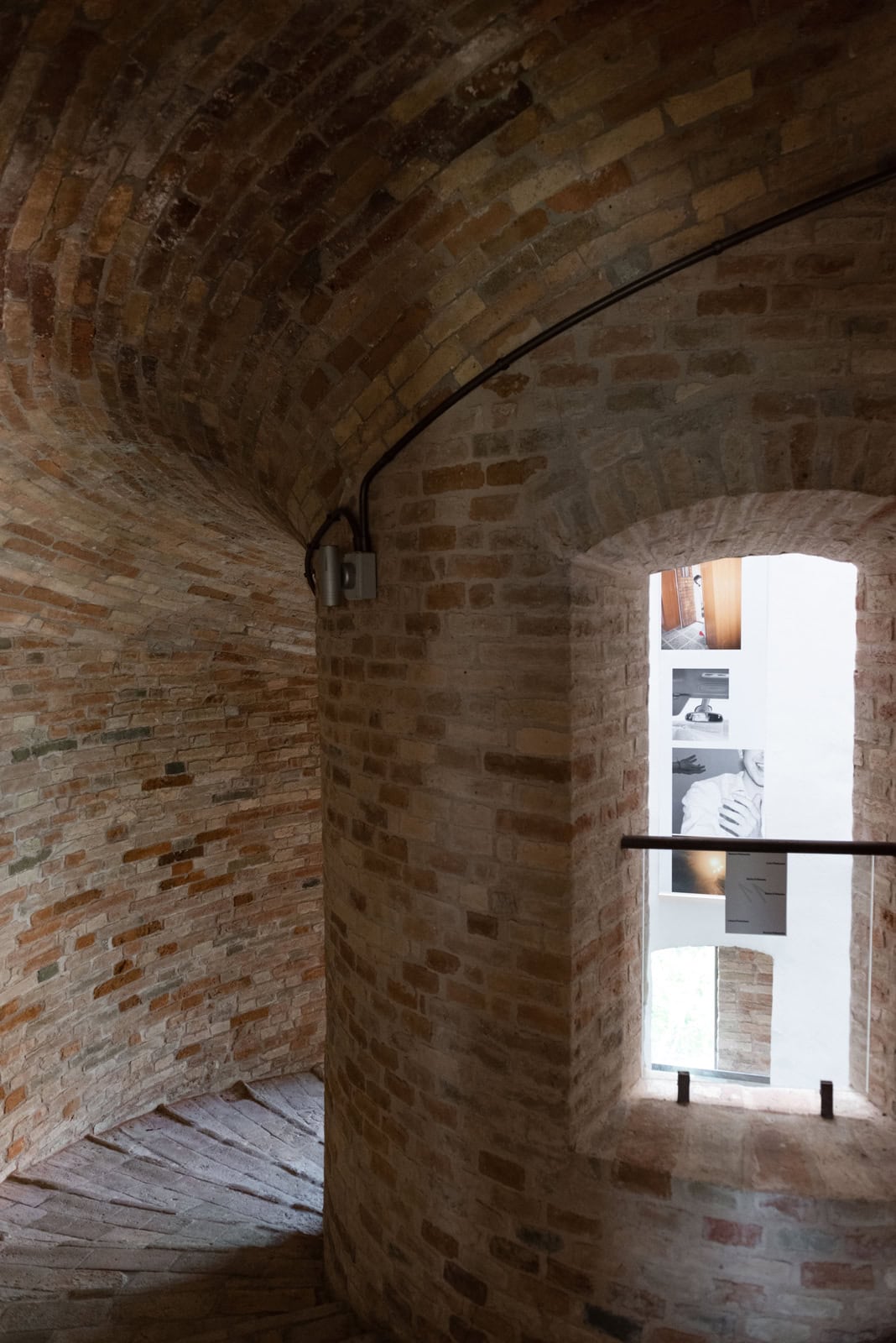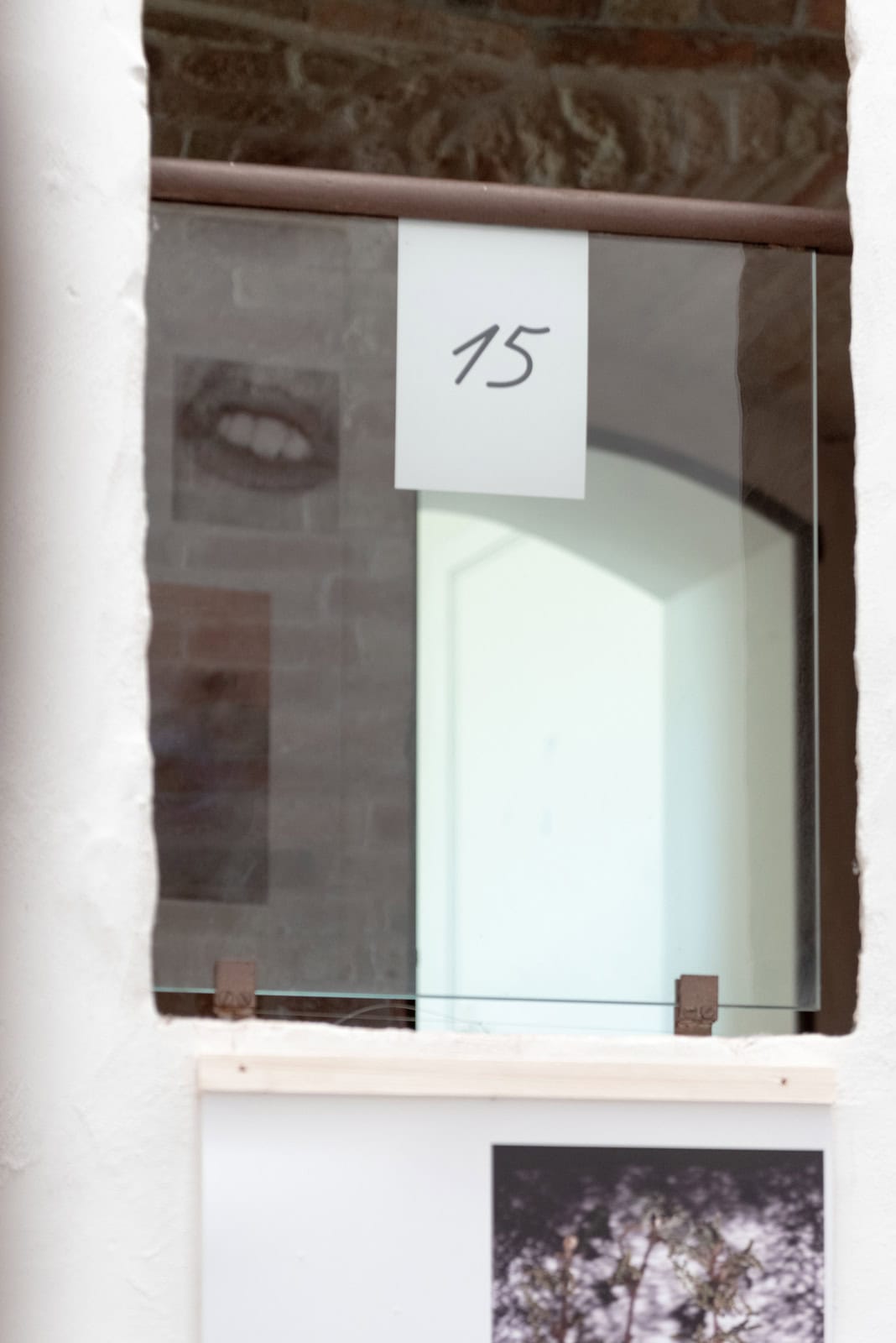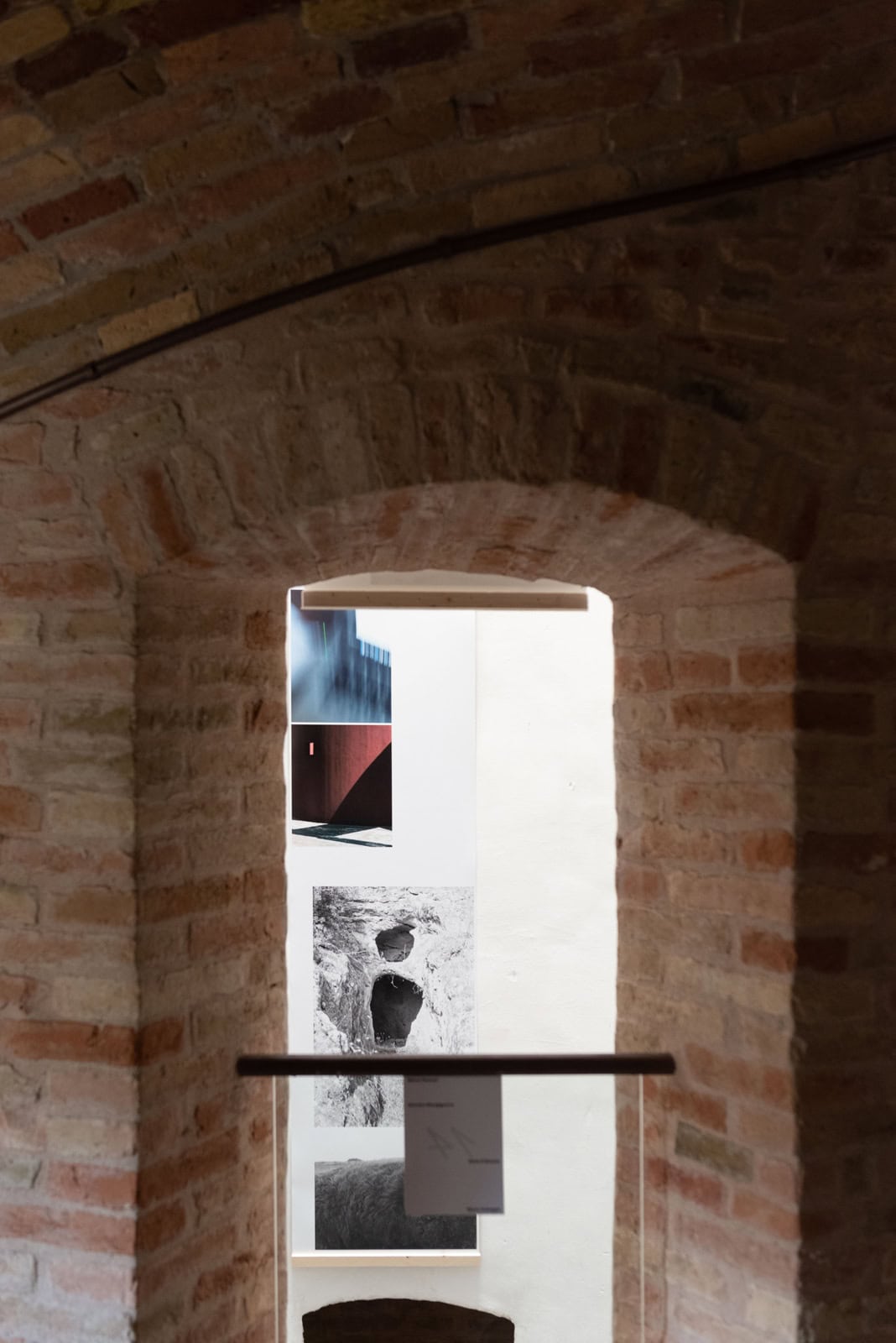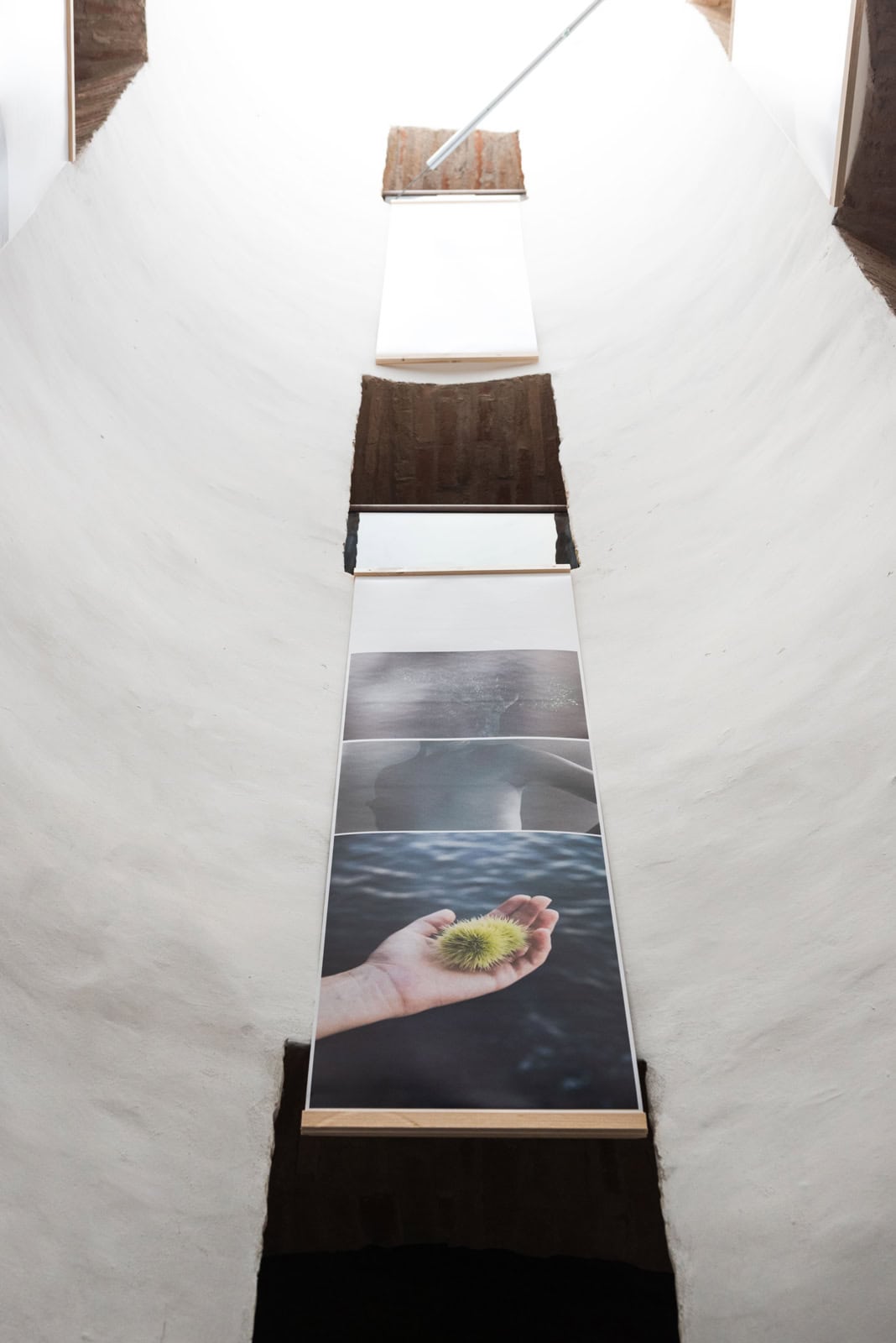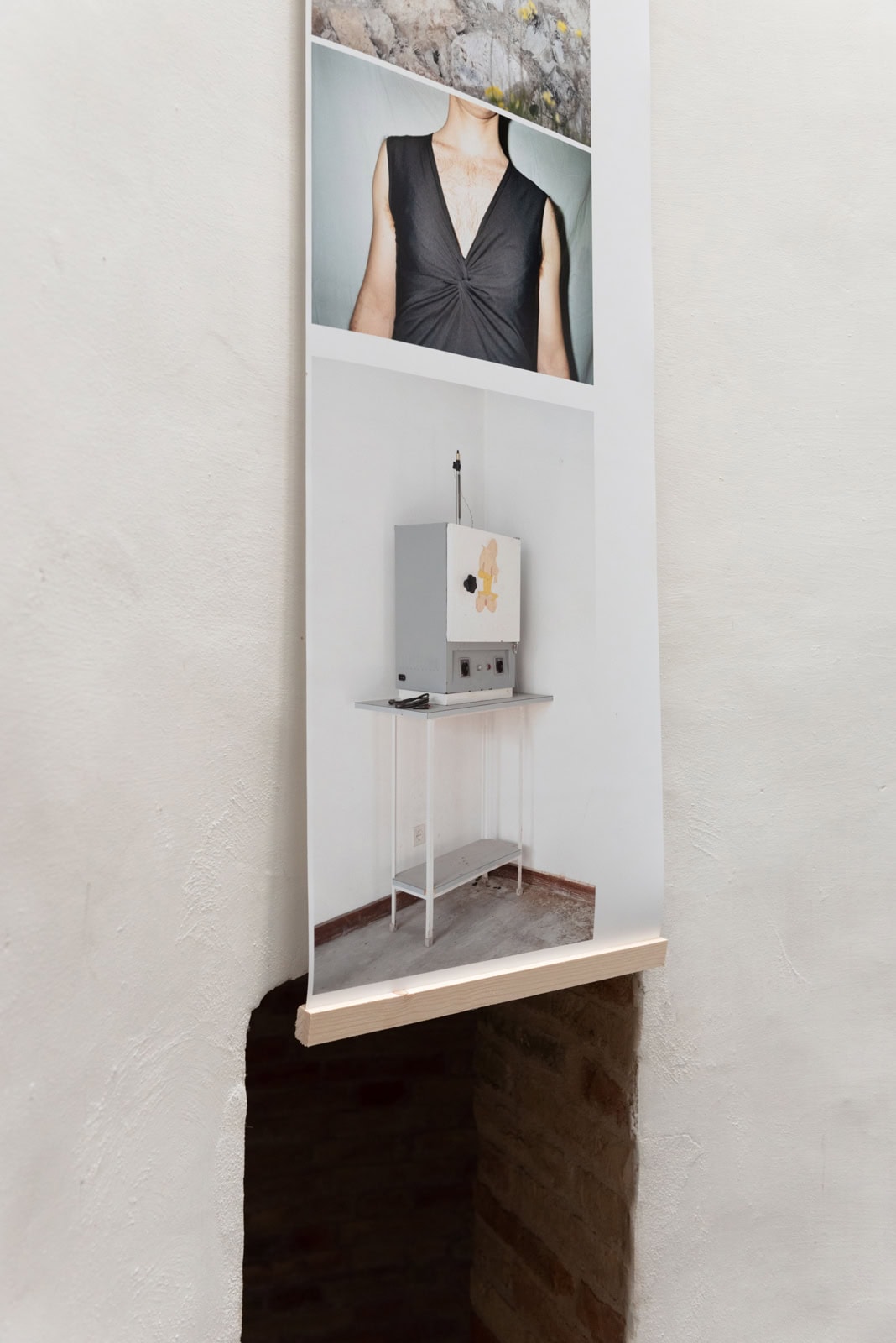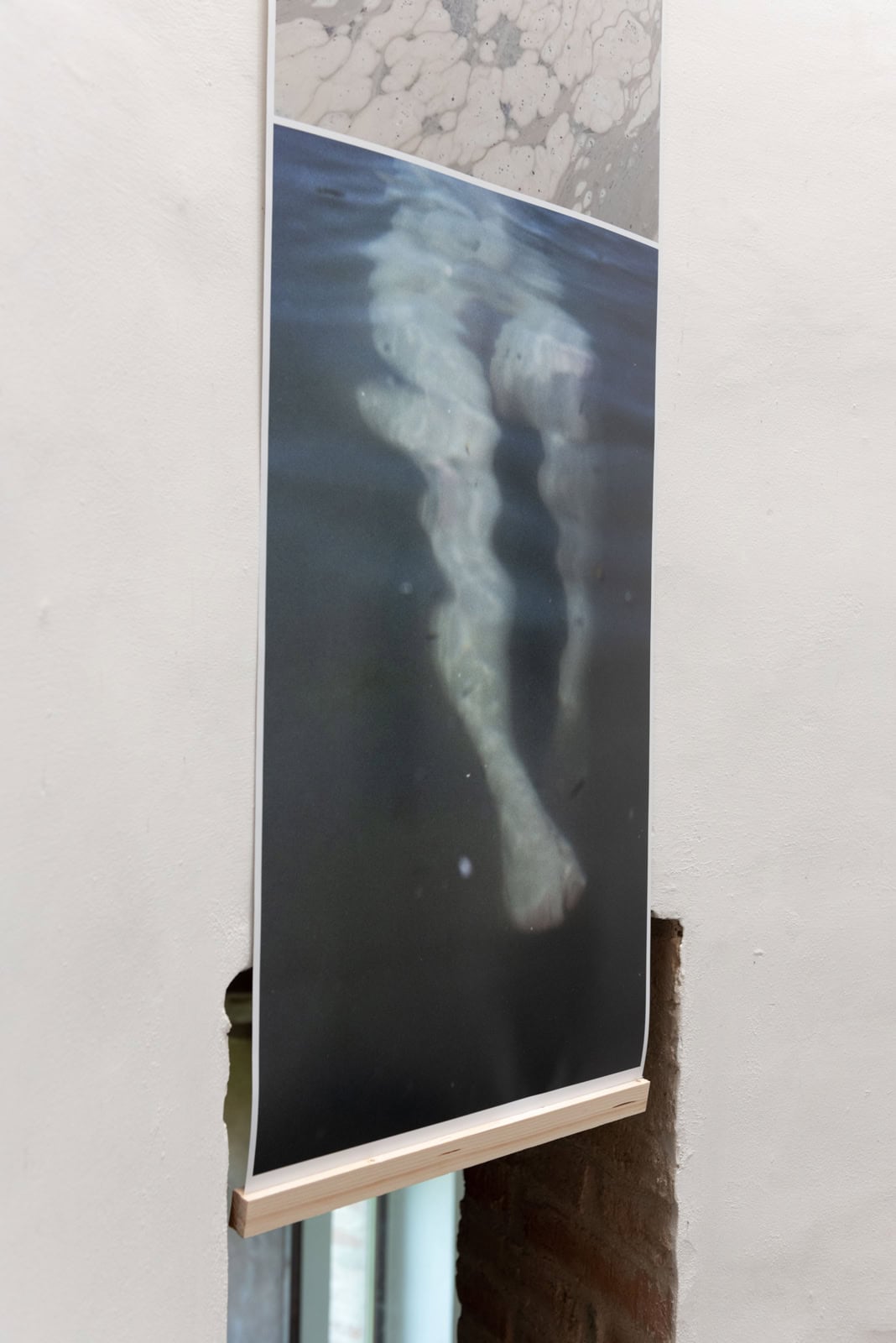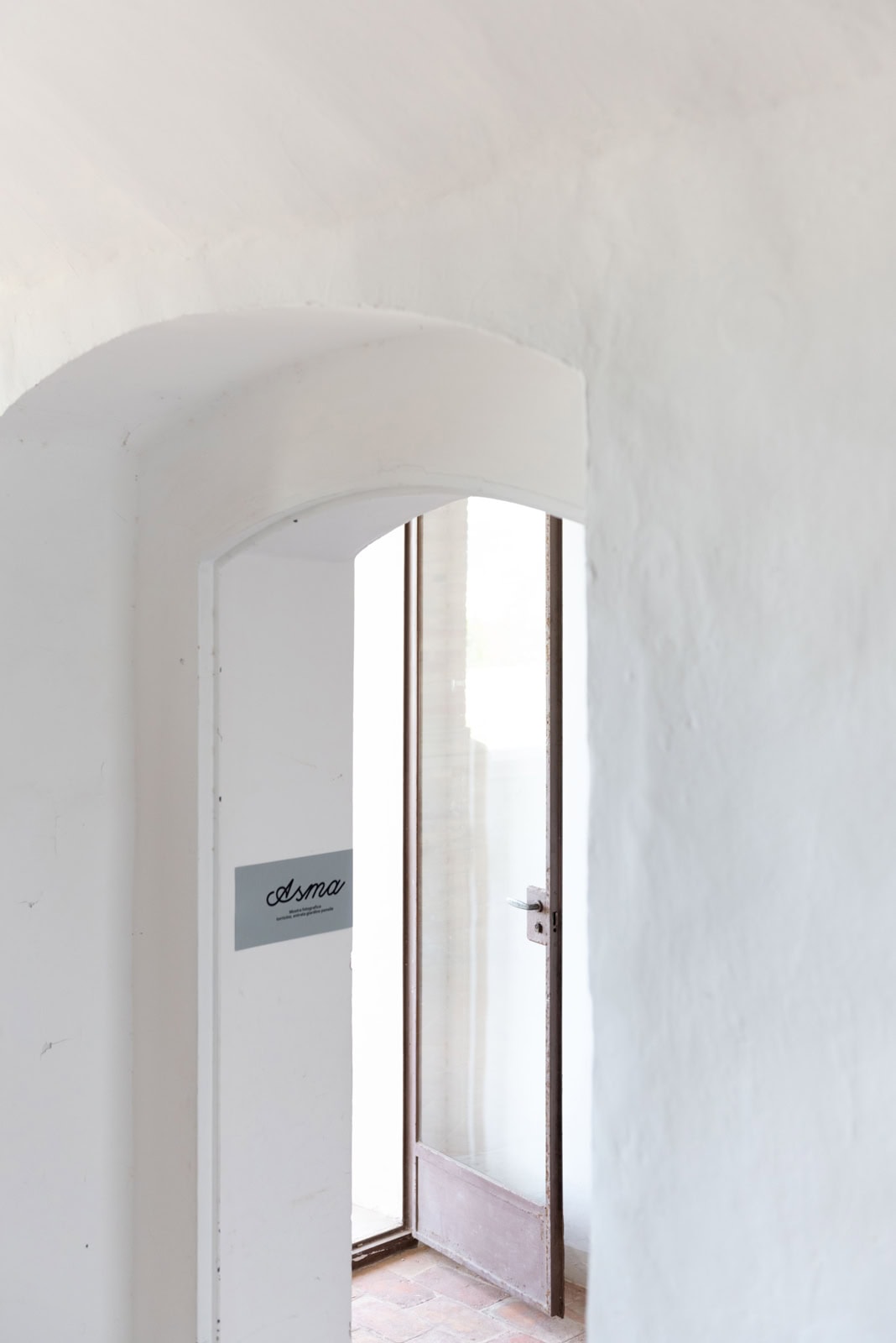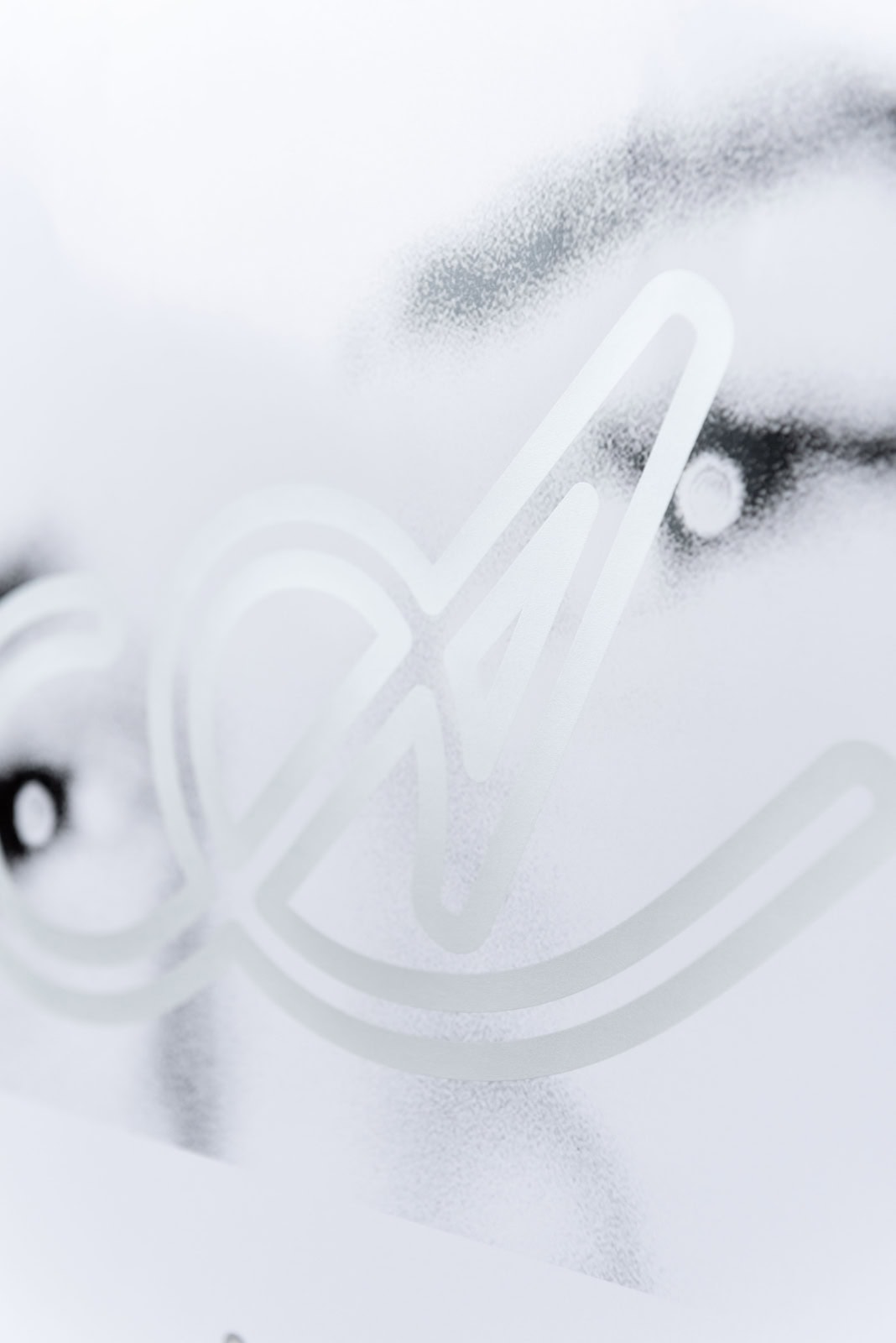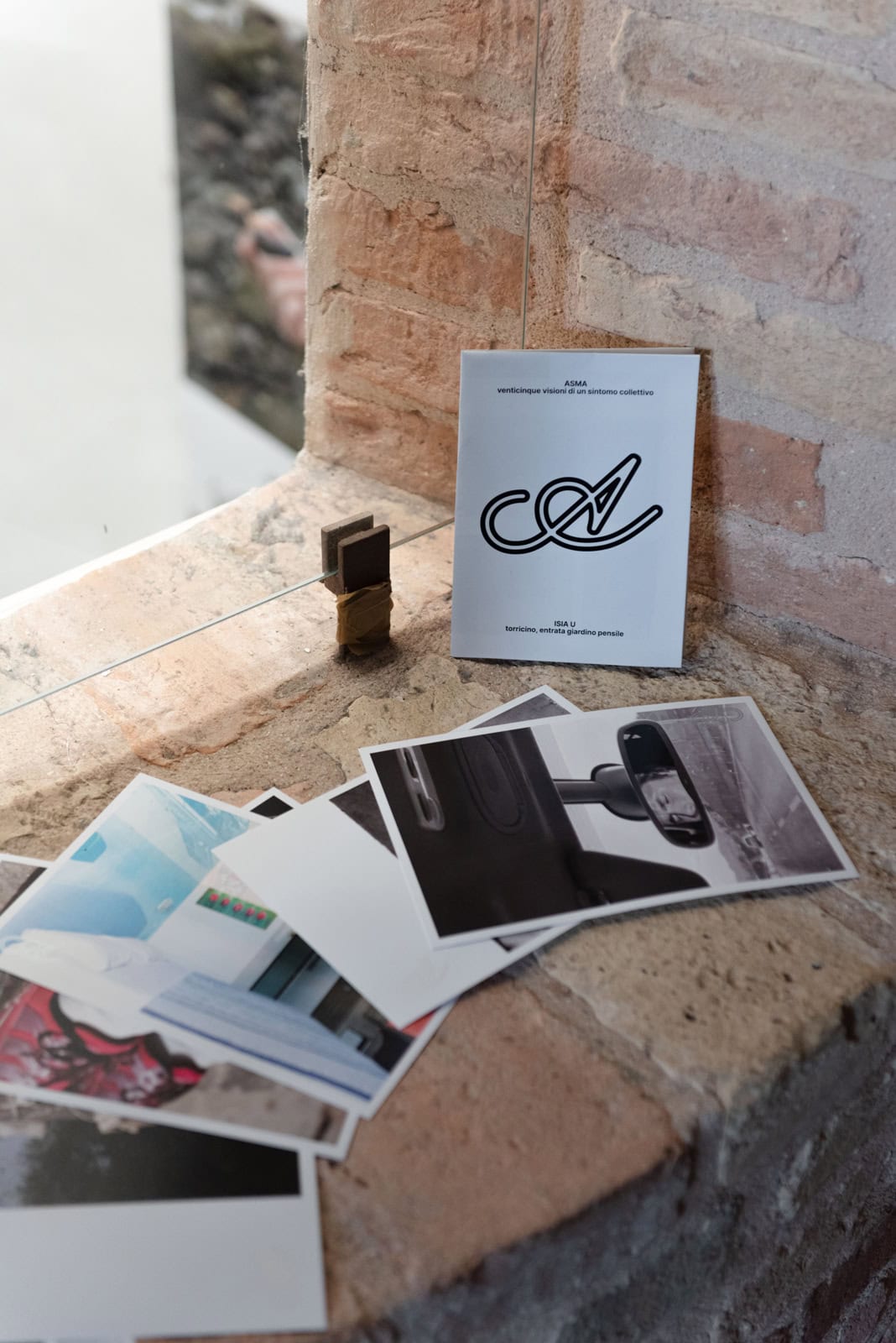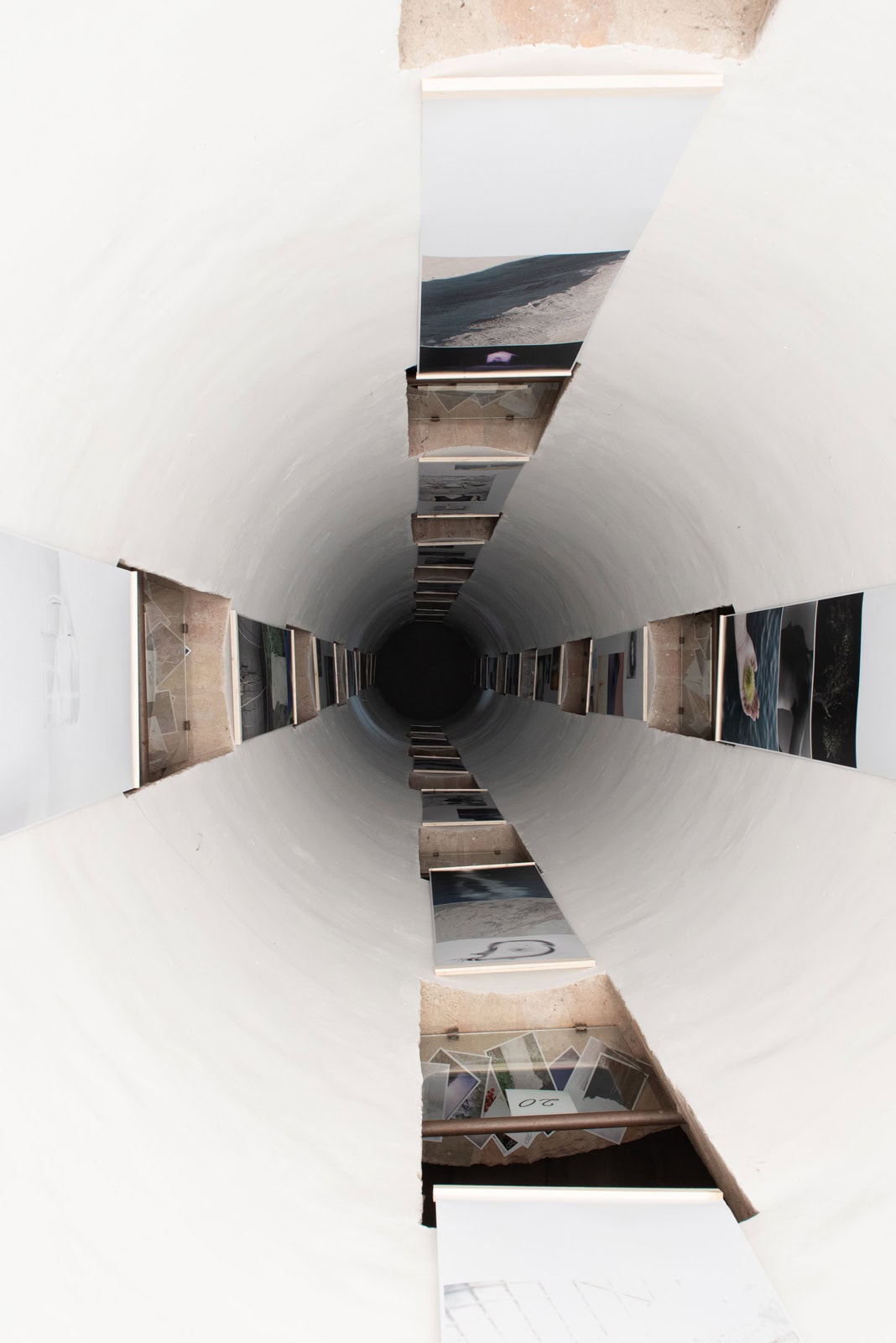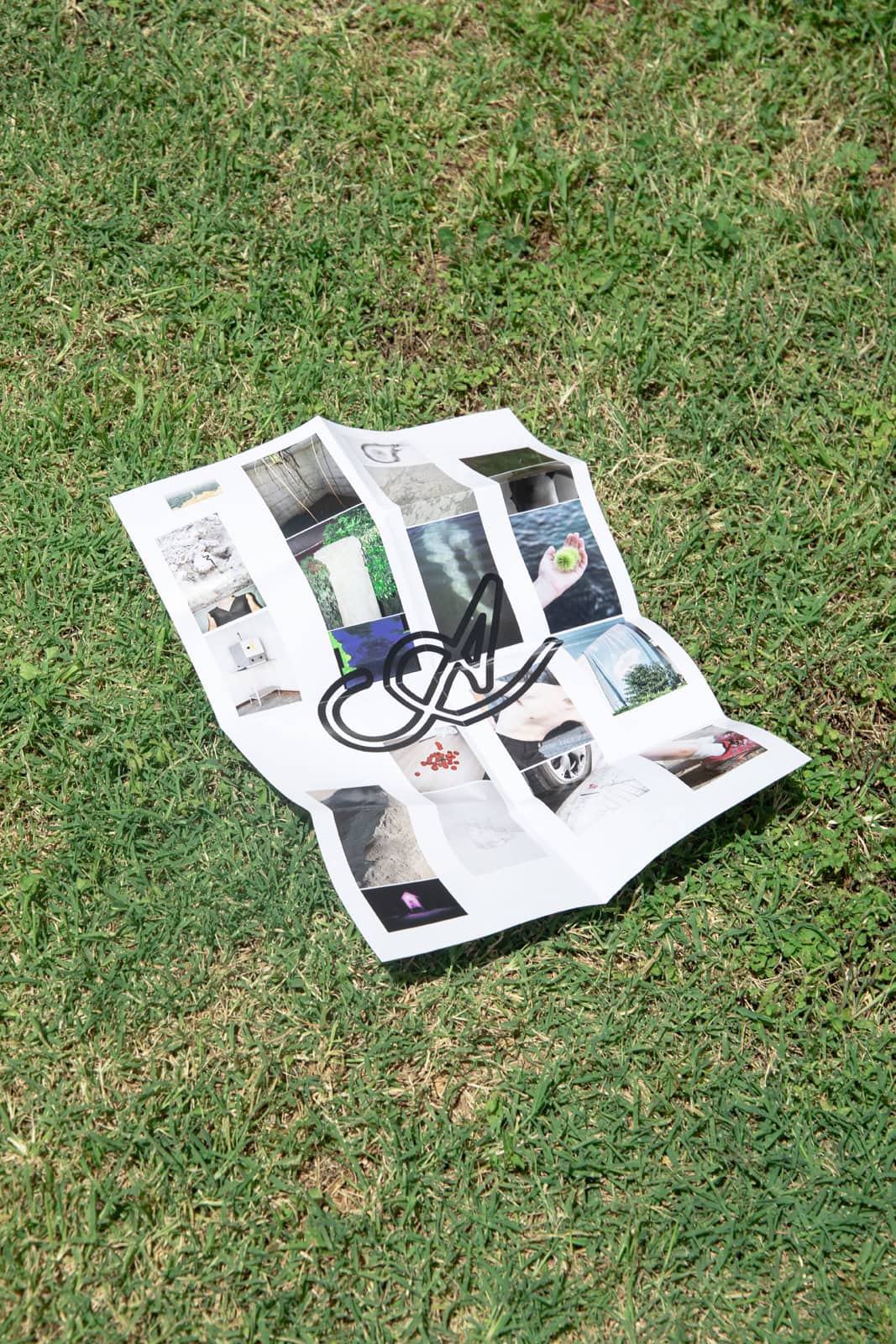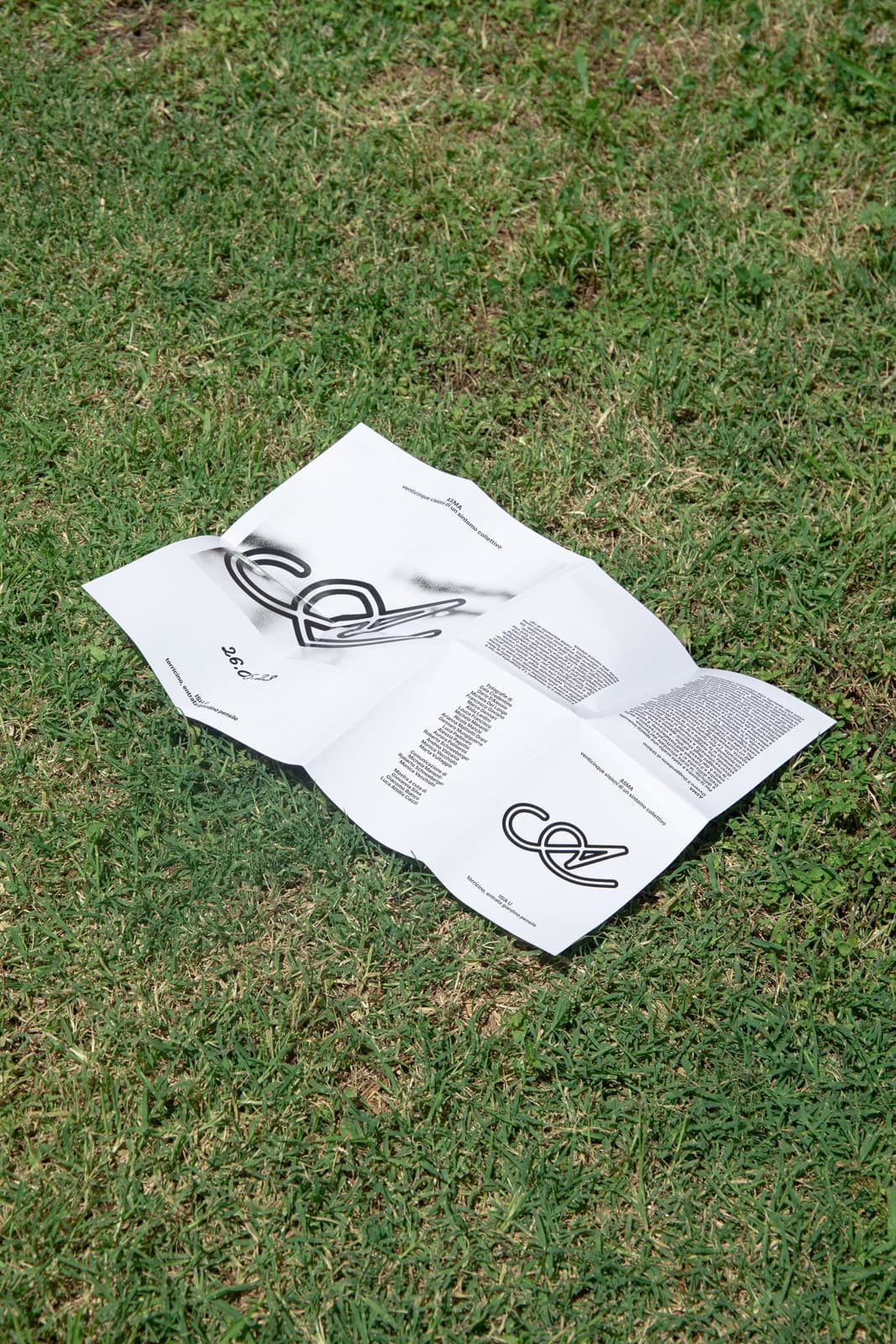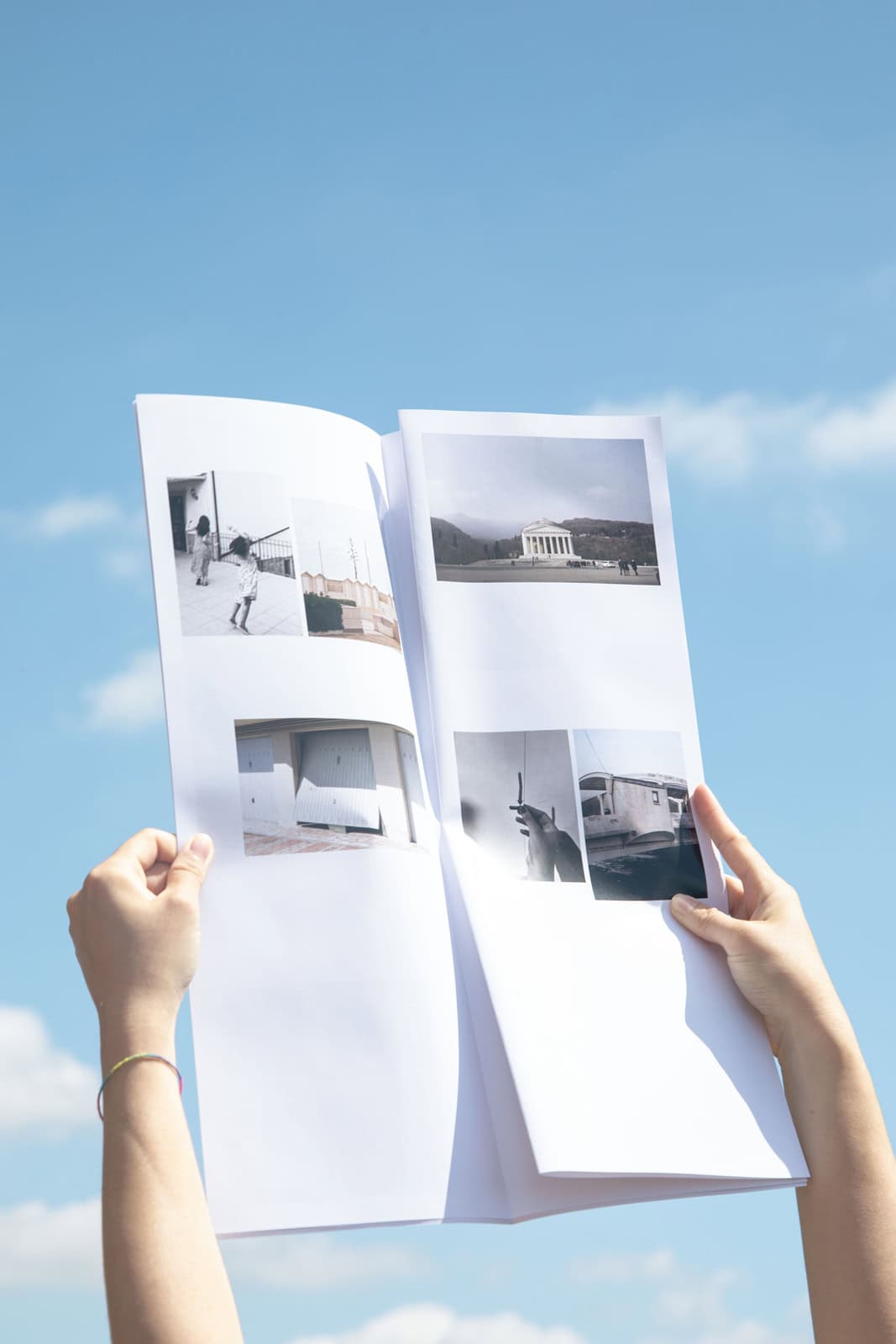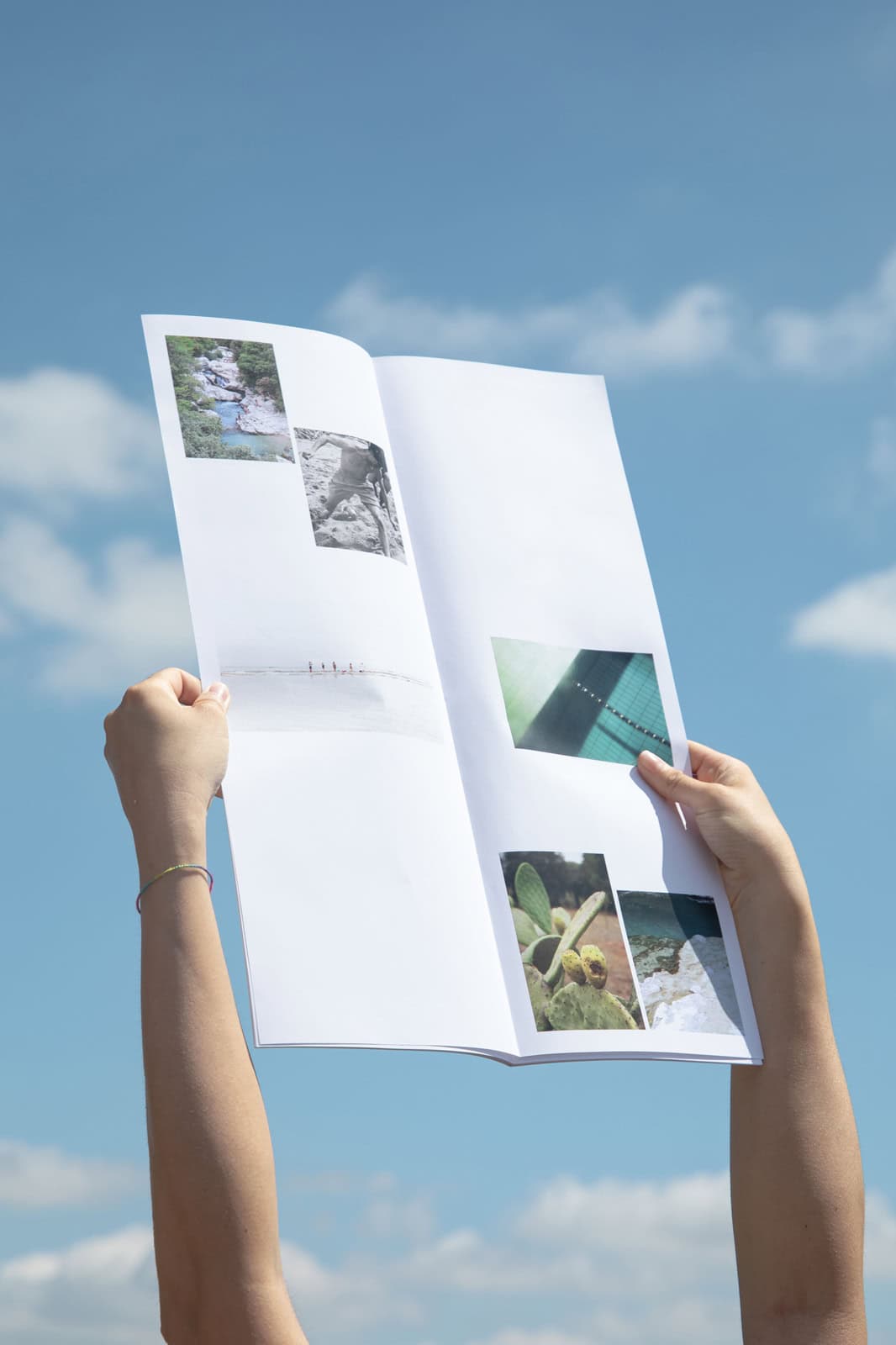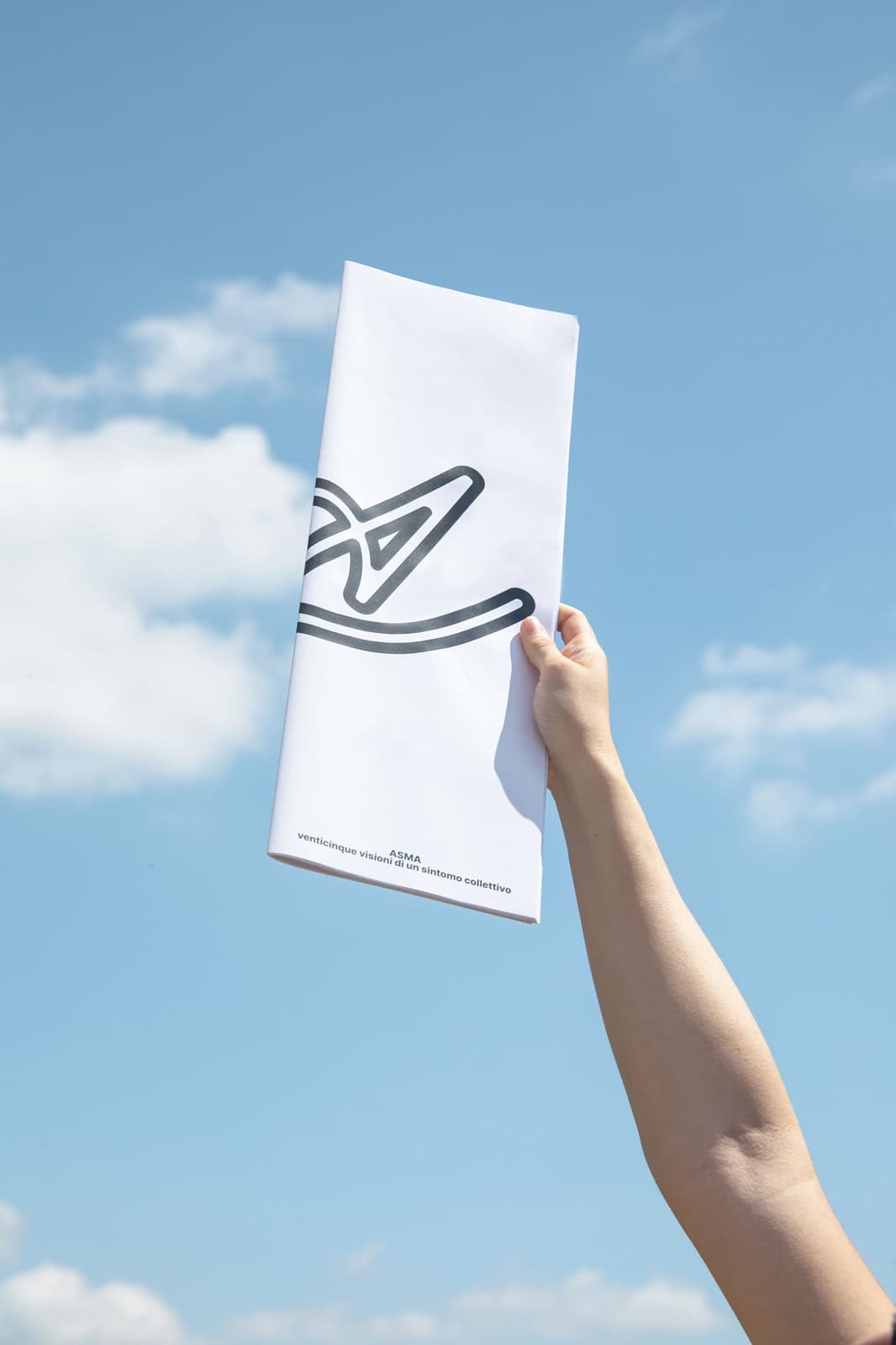Asma, or the Guggenheim of Urbino, is a collective exhibition curated by Giovanna Silva, Giacomo Bianco and Luca A. Caizzi during a workshop at ISIA Urbino. It took place in the spiral staircase of the small tower of the building—an unusual and challenging space for an art show—but it’s precisely from this difficulty that the exhibition’s aesthetic and the installation’s concept were conceived.
The sense of visiting is from bottom to top and vice versa. The images of the students are hung on banners with varying intensity depending on the height. Going up requires effort, so the viewing becomes a moment to regain strength and breath.
The photographs take up more and more space, moving from a free and full layout to a single picture filling the entire banner. The higher one climbs, the more the oxygen in the blood decreases, forcing our brain to store less information.
Paradoxically, the staircase leads nowhere, and the viewer is forced to retrace the helix in the opposite direction, with a different focus and speed.
The vision is twofold and punctuated by obligatory viewpoints through the openings of the central tower. The parapets are used as descriptive panels, and the architectural elements as part of the exhibition design.
From a curatorial point of view, the idea was to use all critical elements to our advantage, dwelling on and trying out different solutions that consider the viewer’s vision. An exhibition is not just the photograph you choose, but how you interpret the space you have, inventing site-specific solutions that further reinforce the concept and the images.
Photography, in this case, is understood as a collective phenomenon. All the photographs were initially uploaded automatically—selected by the authors themselves with no ambitions other than curatorial—and then reorganised by visual associations. Each photographer first had to edit their work, then committed themselves to the collective and eventually took over their work in the editorial phase by creating the layout.
The graphics develop on a font that stretches out into space, a curvilinear progression reminiscent of a spiral staircase. The elements outside the stairs were used as information support, but also as a reinforcing element to the exhibition itself.
